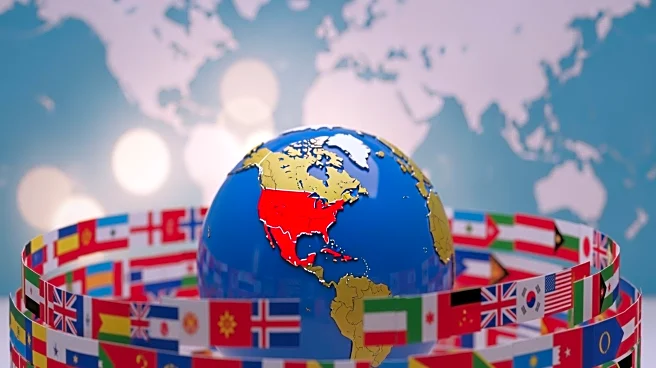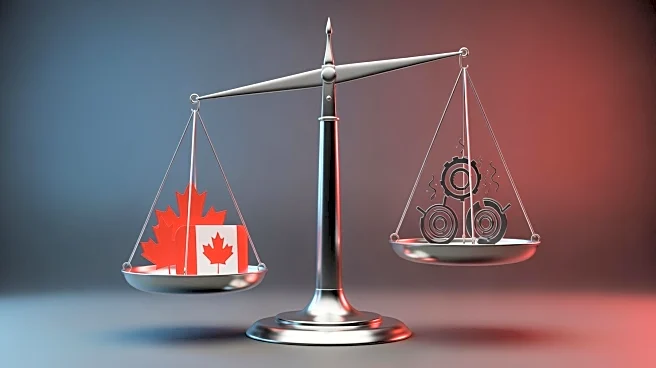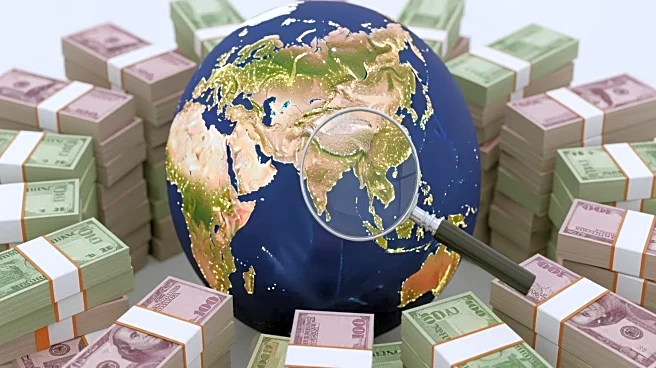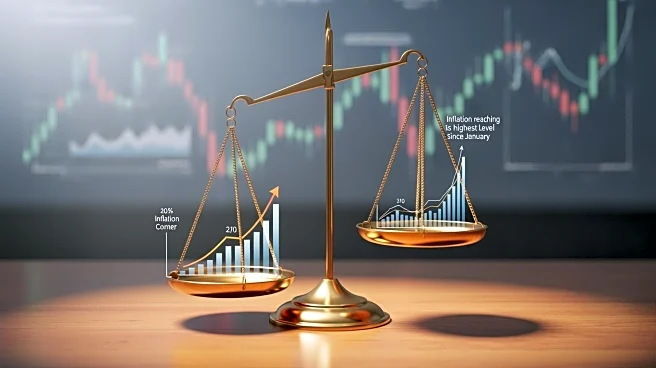What's Happening?
The Financial Times has highlighted a critical analysis of President Trump's use of tariffs as a tool for trade protection. The article, part of an educational program, questions the effectiveness of tariffs in achieving
the intended economic outcomes. It discusses the rationale behind the U.S. government's imposition of tariffs on imported goods, such as protecting domestic industries and generating government revenue. However, the analysis suggests that tariffs may not be as powerful a tool as President Trump believes, particularly in the context of complex global trade dynamics. The article uses the example of a hypothetical 50% tariff on Indian packaged medicines to illustrate potential impacts on U.S. consumer prices, producer surpluses, and economic efficiency.
Why It's Important?
The discussion on tariffs is significant as it touches on broader economic policies and their implications for international trade relations. Tariffs can lead to increased prices for consumers and potential retaliatory measures from trading partners, which may harm U.S. exporters. The analysis suggests that while tariffs can protect certain domestic industries, they may also disrupt supply chains and reduce overall economic efficiency. This critique is particularly relevant in the context of ongoing trade tensions and negotiations, where the effectiveness of tariffs as a bargaining tool is under scrutiny. Stakeholders such as businesses, consumers, and policymakers are directly affected by these trade policies.
What's Next?
The ongoing debate over the use of tariffs is likely to continue, with potential implications for future trade negotiations and economic policies. Policymakers may need to consider alternative strategies to address trade imbalances and protect domestic industries without resorting to tariffs. Businesses and industry groups may advocate for more comprehensive trade agreements that address underlying issues such as intellectual property rights and market access. The outcome of these discussions could shape the U.S. trade policy landscape in the coming years.
Beyond the Headlines
The use of tariffs raises ethical and legal questions about the balance between protecting domestic industries and maintaining fair trade practices. There is also a cultural dimension, as tariffs can influence consumer behavior and perceptions of foreign products. Long-term shifts in global trade patterns may result from sustained tariff policies, potentially leading to realignments in international economic alliances.












